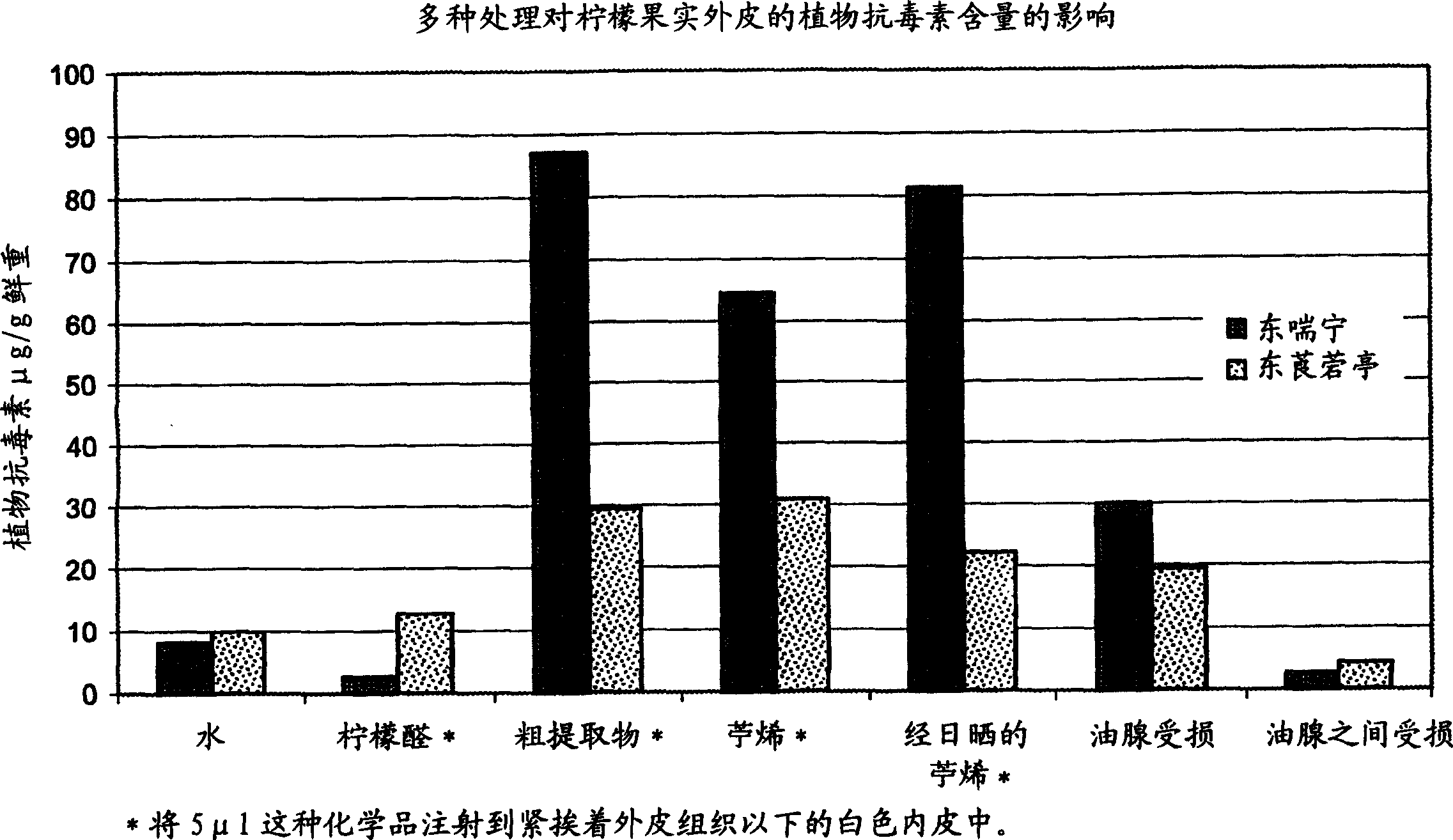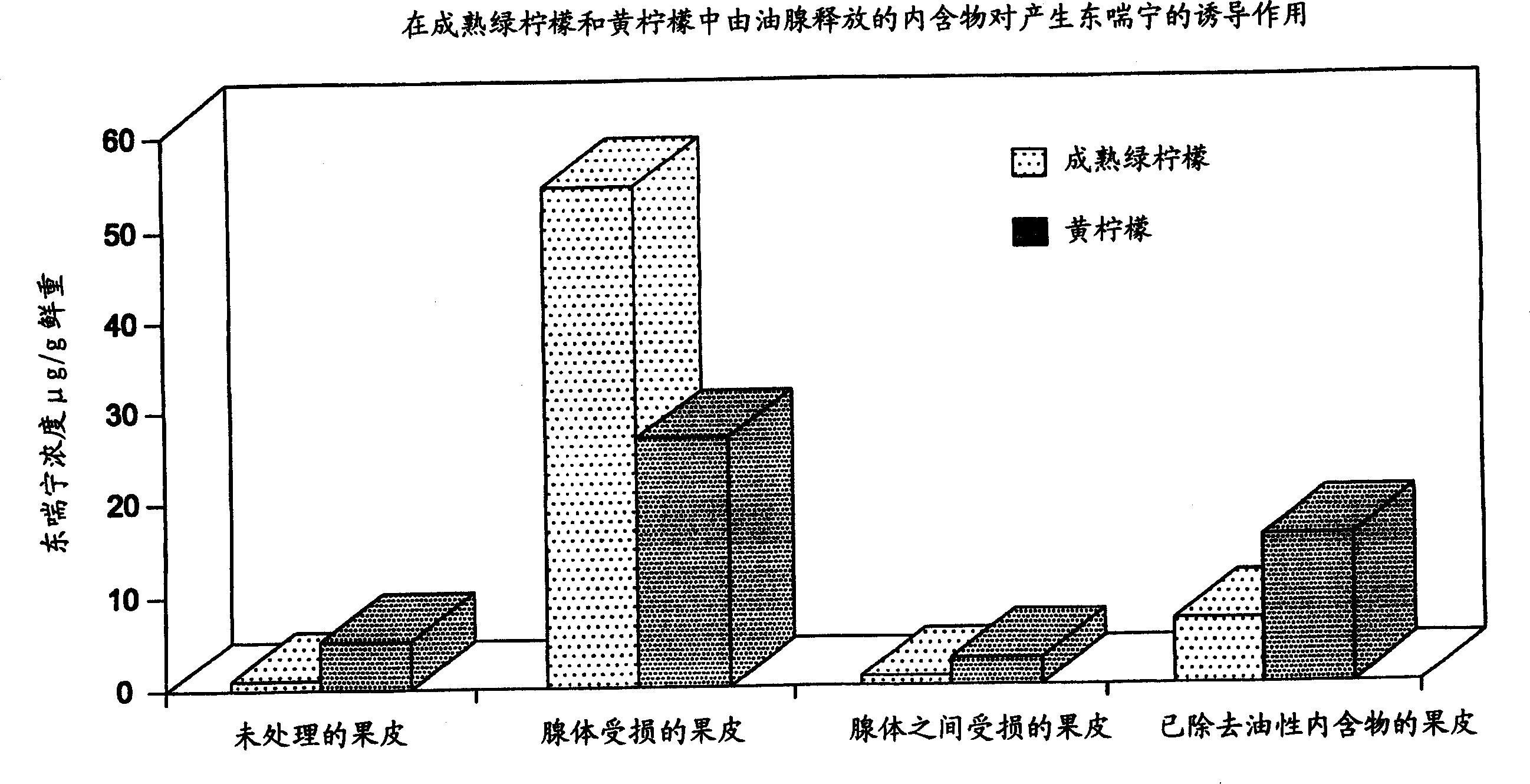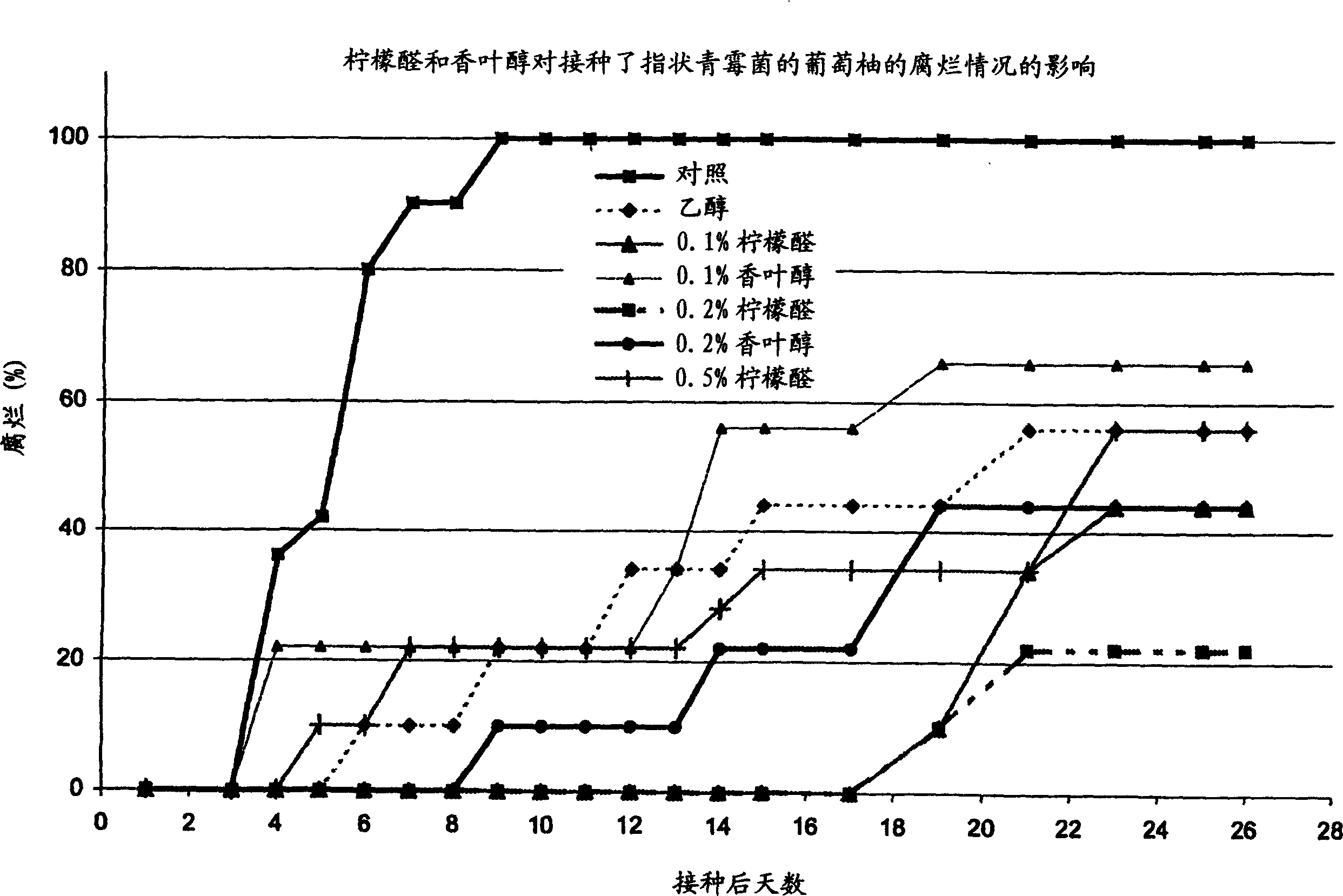Microbiocidal formulation comprising essential oils or their derivatives
A technology for killing microbes and derivatives, which is applied in the direction of biocides, chemicals for biological control, biocides, etc., and can solve problems such as decay, instability, and lack of commercial availability of agricultural products
- Summary
- Abstract
- Description
- Claims
- Application Information
AI Technical Summary
Problems solved by technology
Method used
Image
Examples
Embodiment 1
[0086] Comparison of essential oils and imazalil in minimum inhibitory concentration and mode of action against Penicillium digitatum do not
[0087] The minimum inhibitory concentration (MIC) of more than 50 compounds found in the oil glands of citrus fruits was evaluated (in vitro) by determining the lowest concentration of the compound at which the pathogen would no longer grow (in vitro) in a petri dish. Table 5 shows the MICs of the more potent (compared to imazalil) compounds. In a sterile Petri dish (90 mm) containing 15 ml of molten Potato Dextrose Agar (PDA) (50 °C) was added the required amount of each test compound dissolved in 0.5 ml of acetone so that the final concentration was 1 mg / ml. Shake the dish gently to ensure even distribution of the test compound, then allow the agar to solidify. Discs (8 mm) of mycelium were excised from agar plate cultures of Penicillium digitatum that had not started to sporulate and were used to inoculate the Petri dishes. T...
Embodiment 2
[0119] Unblemished grapefruits are harvested from the orchard and sorted again the same day in the laboratory to remove damaged fruit. Rinse the grapefruit under running water and let it dry naturally in the air. Then use a tool to puncture three needles in three different parts of each fruit, and pierce the outer skin tissue to a depth of 1.5 mm to inoculate. Before each acupuncture, the tool was soaked in a spore suspension of Penicillium digitatum (10 6 spores / ml). The inoculated grapefruits were placed for 24 hours at a temperature of 17° C. and a relative humidity of 85%, then the grapefruits were divided into 6 groups, and the grapefruits of each group were processed by immersion in the following solutions for 2 minutes: (a) water; b) 25% ethanol (EtOH); (c) 25% ethanol with 0.2% geraniol; (d) 25% ethanol with 0.1% citral; (e) 25% ethanol with 0.2% citral Ethanol and (f) 25% ethanol with 0.5% citral dissolved.
[0120] The percentage of rotten fruit in each group was...
Embodiment 3
[0125] Lemons were inoculated according to the method shown in Example 2, and treated with 25% ethanol and without 25% ethanol to determine whether 5000 ppm emulsifier Tween 20 could stabilize the antifungal activity of citral. See results Figure 4 , which showed that Tween 20 at this concentration enhanced the activity of citral. In addition, the emulsifier avoids the phytotoxicity normally caused by citral when not dissolved in ethanol. It may be that this emulsifier enables the formation of stable emulsions in the form of microcolloids, avoiding phytotoxicity by homogeneously dispersing citral, which is itself phytotoxic at these concentrations. Thus, the combined use of Tween 20 and antioxidant BHA can replace ethanol in the formulation.
PUM
 Login to View More
Login to View More Abstract
Description
Claims
Application Information
 Login to View More
Login to View More - R&D
- Intellectual Property
- Life Sciences
- Materials
- Tech Scout
- Unparalleled Data Quality
- Higher Quality Content
- 60% Fewer Hallucinations
Browse by: Latest US Patents, China's latest patents, Technical Efficacy Thesaurus, Application Domain, Technology Topic, Popular Technical Reports.
© 2025 PatSnap. All rights reserved.Legal|Privacy policy|Modern Slavery Act Transparency Statement|Sitemap|About US| Contact US: help@patsnap.com



